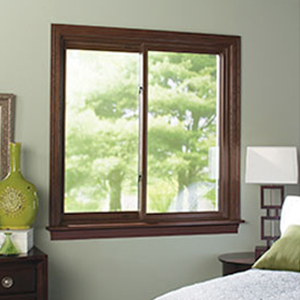Condensation is a sure sign that your windows have to be changed.
Windows are a vital barrier between the rough, variable weather outside as well as our calm, constant residence temperatures. Home replacement windows tend to have a fifteen to twenty-year lifespan, so thankfully we don't have to think about changing them too often. But knowing when it's time to replace them can be challenging. You could be tempted to try and hold out for another season if you notice the warning signs. However replacing your windows now can help you expand the life of your entire residence and also maintain you and also your household warm all winter season long. Right here are a few indications that your windows are not all set for the rough winter this year.
Drafty Residence
As home windows age, they start diminishing, breaking, as well as not closing properly, enabling air from within your the home of flow out. As a result of this, your A/C system has a hard time to keep your house at a constant temperature level and sends your energy bills increasing. If your house is significantly more drafty or your electrical bills appear to be going up this succumb to no obvious reason, you could wish to have your home windows took a look at.
Difficult to Lock
We appreciate having our windows open when the weather condition is nice, yet they shouldn't be open every one of the moment. During the wintertime when we're away, your home windows should be shut in place and locked. Windows with malfunctioning locks is a significant safety and security danger that must be treated as soon as possible to keep your household risk-free. Usually the lock can be repaired inexpensively, but if the home window is having trouble staying open or shut or is leaking air, it could be best to merely mount a new one.
Condensation Forming
The most significant indication that you need new windows is when condensation begins to form on the inside of your window when it is shut and also secured. This is a measure of a most likely permanent problem and also needs to be attended to immediately to stop the prospective development of mold in the frame, which could spread to various other locations of your house and also cause serious damage when left unattended.
Have you nearly had it with your old, breezy home windows?
Is this the year you've determined to finally replace your home windows? Replacing your windows with new ones has great deals of benefits, consisting of an energy performance increase, far better air flow, as well as better quality of light in your house. The National Fenestration Rating Council licenses and identifies home windows (along with doors as well as skylights) on their performance and also power effectiveness. When you're buying new windows you'll see these ratings on the NFRC label. In this week's blog, we'll speak about how you can read this label to earn certain you're making an educated decision on your new windows.
Heat Gain and Loss
The first 3 buildings on the tag concern just how the home window does when it come to warmth gain and also loss. Windows gain and lose heat in three ways:
Direct conduction through the glass.
Radiation of heat from the sun into your home, as well as get more info out of the house from items in your house.
Air leak through and also around the home window.
U-factor
This is "The price at which a home window, door, or skylight carries out non-solar warmth flow." The takeaway here is "The lower the U-factor, the much more energy-efficient the window, door, or skylight."

Solar Warmth Gain Coefficient
The SHGC informs us what does it cost? radiation is admitted with the home window and launched as heat in the home. The reduced the number, the much less warm is transferred. Nevertheless, this does not always suggest you want a reduced SHGC. For instance, because a higher SGHC indicates the window enables extra heat in, you can enable much more solar warm inside in the winter months, which might decrease your home heating needs. In this instance, the environment you reside in will play a major consider selecting an SHGC score.
Air Leakage
This quantifies how much air the window allows about a particular stress distinction across it. The reduced the rating, the less air leak.
Sunshine Passage
The following two scores determine just how much light a home window lets right into your home.
Visible Passage (VT).
This number in between 0 and 1 procedures what fraction of the spectrum of noticeable light the window lets through. The greater the fraction, the much more light the home window will certainly permit. If you want to employ daylighting in your home, you'll desire a greater fraction. If you want to decrease interior glow, you might want a lower fraction.
Light-to-Solar Gain.
This number is the ratio between the SHGC and the VT. "The higher the number, the more light transmitted without adding excessive amounts of warm.".